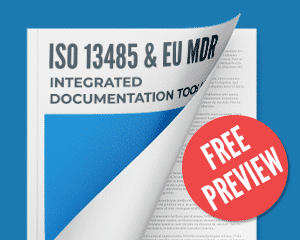Lots of medical device manufacturers want to sell their products in both EU and UK markets, but they need different regulations for those two markets. By understanding both the EU MDR and UK MDR regulations, medical device manufacturers can ensure that they meet the legal requirements for placing their products in both of these markets – this article presents how to approach this task.
- The UK MDR applies only to the UK market, while the EU MDR applies to the entire European Union.
- The UK MDR applies to medical devices and in-vitro diagnostic devices, whereas the EU MDR applies only to medical devices.
- The UK MDR uses GMDN nomenclature, and the EU MDR uses EMDN nomenclature.
What is the EU MDR, and what is the UK MDR?
EU MDR 2017/745 is the European Union Medical Device Regulation. It is a set of rules and standards that regulate the safety, quality, and performance of medical devices in the EU.
The UK MDR is the UK Medical Devices Regulation 2002, the legal framework regulating the safety, quality, and performance of medical devices in the UK. To learn more about the UK MDR, see this material: https://www.gov.uk/guidance/regulating-medical-devices-in-the-uk.
Both regulations aim to ensure full protection for human health and the environment while fostering innovation and competitiveness in the medical device sector.
How the UK MDR has evolved
The UK was subject to the EU’s medical device regulations, but after Brexit, the UK needed its own set of regulations to maintain its medical device market. As a result, the UK introduced its version of the Medical Device Regulation (the UK MDR, also called UK MDR 2002), which differs from the EU MDR in several ways. UK MDR rules govern the manufacture, distribution, and use of medical devices in the UK. The UK MDR aims to replace the existing EU rules that the UK implemented before it exited the EU.
This has caused confusion and uncertainty for manufacturers of medical devices, who must now comply with two sets of regulations to sell their products in both the UK and EU markets.
UK MDR marking requirements are currently based on the requirements of the relevant Annexes to the EU Directives listed below, which have been further modified by Schedule 2A to the UK MDR 2002:
- Directive 90/385/EEC on active implantable medical devices (EU AIMDD)
- Directive 93/42/EEC on medical devices (EU MDD)
- Directive 98/79/EC on in-vitro diagnostic medical devices (EU IVDD)
Starting in 2021, all medical devices must be registered with the Medicines and Healthcare Products Regulatory Agency (MHRA) when placed on the UK market.
EU MDR and UK MDR similarities
The EU MDR and the UK MDR have many similarities. While applied in different countries, both the EU MDR and the UK MDR regulate medical devices and seek to ensure their safety and efficacy, as visible in the table below.
| Common Requirements by UK MDR and EU MDR | EU MDR | UK MDR |
| Technical documentation has to include a description of the device’s design, including a list of all components and materials used, along with its intended purpose and indications for use. | ✓ | ✓ |
| Clinical evaluation is to be conducted, using clinical data to support claims of safety and efficacy, by a qualified individual or team with expertise in the relevant field. | ✓ | ✓ |
| A Unique Device Identification (UDI) number is to be used to enhance traceability, with the same four issuers to be used as the MDR (GS1, HIBCC, ICCBBA, IFA). | ✓ | ✓ |
| The UK MDR requires any manufacturer outside of the UK to appoint a UK Responsible Person (UKRP) who will be responsible for regulatory compliance on behalf of the manufacturer, while the EU MDR requires manufacturers outside of the EU to appoint an authorised representative. | ✓ | ✓ |
| Medical devices undergo a conformity assessment procedure before being placed on the market. | ✓ | ✓ |
| The conformity assessment has to be conducted by a notified body. | ✓ | ✓ |
| The notified body is designated by the competent authority in the member state or country where the device is being placed on the market. | ✓ | ✓ |
Main differences between the UK MDR and the EU MDR
There are some significant differences between the UK MDR and the EU MDR. One is that the UK MDR will only apply to the UK market and will not be recognised by EU member states. It is crucial for companies that manufacture or distribute medical devices to understand these differences to ensure compliance with both sets of regulations and to avoid any potential penalties or legal issues.
| UK MDR | EU MDR |
| Applies only to the UK market (applicable to England, Scotland, and Wales, while for Northern Ireland, the Northern Ireland protocol applies). | Applies to all member states in the EU. |
| Clinical investigation must be performed in accordance with Guidance on legislation. Clinical investigations of medical devices – guidance for investigators. May 2021. | Clinical investigation must be conducted in line with Article 62 through Article 82. |
| Applies to both medical devices and in-vitro diagnostic devices. | Applies only to medical devices (in-vitro diagnostic devices are covered by IVDR 2017/746). |
| Uses the UKCA mark. | Uses the EU CE mark. |
| Technical documentation must be compliant with 93/42/EEC MDD. | Technical documentation must be compliant with Annex II and Annex III of the MDR. |
| GMDN nomenclature is used. | EMDN nomenclature is used. |
| Manufacturers and certified medical devices must be registered in the Public Access Registration Database (PARD). | Manufacturers and certified medical devices must be registered in EUDAMED. |
| The UK MDR recognises the UK-designated standards. | The EU MDR recognises the EU harmonised standards. |
| The UK MDR has a grace period for compliance with the UK-designated standards until June 30, 2023. | The EU MDR does not have a grace period for compliance with the harmonised standards. |
How to place medical devices on the EU and UK markets
If a manufacturer is looking to launch their medical device on both the EU and UK markets, they must ensure that they comply with both EU MDR and UK MDR regulations. This means they must meet the requirements for technical documentation, Quality Management Systems, risk management, and conformity assessment for both sets of regulations.
There are a few steps to complying with both the EU MDR and the UK MDR:
- Determine where the authorised representative is needed. EU manufacturers must find an authorised representative for the UK market, while UK manufacturers must find an authorised representative for the EU market. This representative can help register and prepare documentation for the relevant market.
- Prepare the necessary documentation. Although much of the documentation will be repeated within the two files, a separate file must be opened for each market. The preparation of technical documentation for both markets represents a considerable effort. Still, considering the total number of inhabitants in both markets, that effort should be reasonable and profitable.
- Choose a notified body. It’s recommended to choose a notified body that is competent to assess the device’s specific class and type, and that is designated by competent authorities in the EU and the UK. Currently, there are four notified bodies established for the UK MDR. Three of these notified bodies have also been established for the EU MDR. Therefore, it may be best for manufacturers to start the registration process of their medical products with these notified bodies, as they are competent to assess devices for both the EU and UK markets. This would ensure that manufacturers can meet the requirements for both sets of regulations and avoid potential delays or issues in getting their products to market.
To learn more about complying with the EU MDR, watch this webinar recording: Overview of the Steps Needed to Comply With EU MDR.
There is a bright side to it as well…
Although preparing the documentation for both the EU MDR and the UK MDR regulations can be daunting and time-consuming for manufacturers of medical products, here is some encouragement to help you cope with this challenge:
- You can market your products to an extremely large market (a total of 500 million inhabitants in both markets).
- You can gain an extensive database relating to feedback and post-market surveillance.
- You can build a reputation as a reliable and quality provider of medical devices.
According to the European Commission (link: https://health.ec.europa.eu/medical-devices-sector/overview_en), there are more than 500,000 types of medical devices and IVDs on the EU market. These products range from low-risk devices such as thermometers to high-risk devices such as pacemakers.
The European medical technology market was valued at roughly €160 billion in 2022, making up 26.4% of the world market. The top five biggest markets in Europe are Germany, France, the United Kingdom, Italy, and Spain. This means there is a large potential customer base and revenue opportunity for EU manufacturers who can access the UK market.
To implement the EU MDR in the fastest and most efficient way, check out this ISO 13485 and EU MDR Integrated Documentation Toolkit.

 Kristina Zvonar Brkic
Kristina Zvonar Brkic